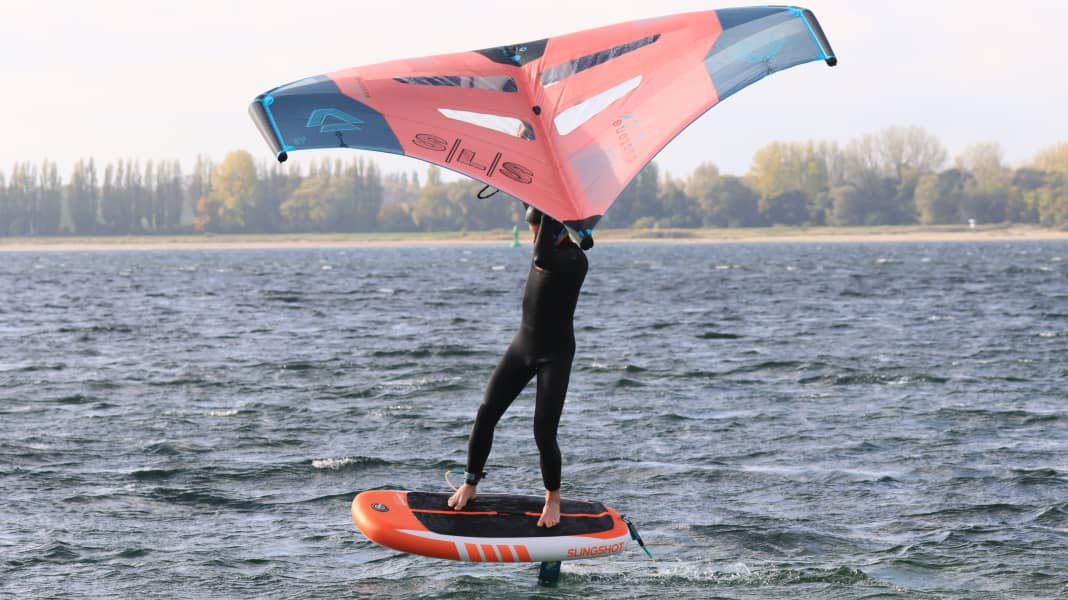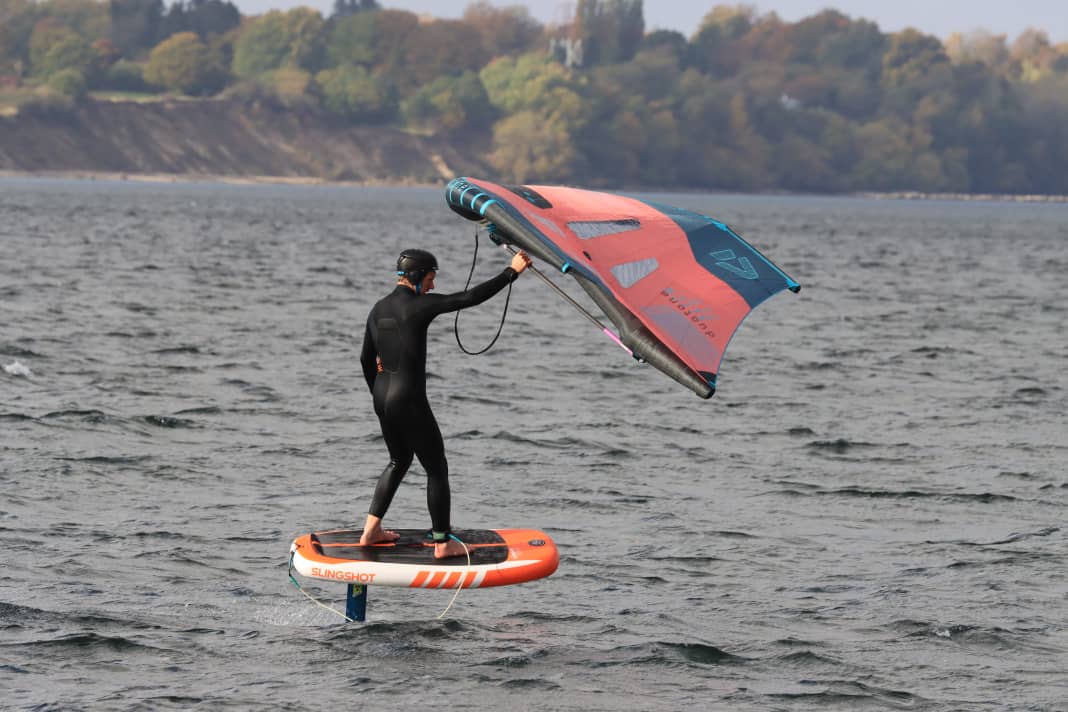
The I-Fly from manufacturer Slingshot is the first inflatable wingfoil board from the US brand. It is available in four sizes with volumes between 90 and 140 litres.
On land:
The I-Fly 120 that we tested weighs a good 6.95 kilos. The scope of delivery includes a pump and a matching bag. The wide nose and comparatively long foil box are striking. This allows a lot of room for manoeuvre when mounting the foil. No matter what type and brand of foil you use, you will always find a suitable position here.




The large deck pad offers a good grip, and there is a handle on both the top and bottom for carrying the board. There are also inserts for attaching the foot straps, although the straps themselves are not included. The pack size of the bag is 95x83 centimetres.
We also present this board in detail on our YouTube channel. Take a look.
On the water:
The Slingshot I-Fly 120 is pleasantly stable in the water around its longitudinal axis. However, when pumping up and accelerating, the board is not as directionally stable as other board models. The reason for this could be the rather thick carbon plate in the underwater hull. This means that more sensitivity and technique is required to keep the board on course. In the air, the board is light, compact, extremely stiff and offers enough space with its flat, wide deck. The board forgives unintentional touchdowns reasonably well, although firm boards with an optimised edge shape are much more forgiving. However, the board has this small disadvantage in common with all other inflatable wingboards. The deck pad offers good contact with the board. Because the strap inserts are only slightly raised and therefore barely noticeable, you can also stomp around strapless as you please. If you mount straps, you can even easily do your first jumps with the board thanks to its reasonable weight.
Slingshot I-Fly 120 - the conclusion:
The Slingshot iFly 120 impresses as a stiff, lightweight wingboard with good features and great equipment. This makes it suitable for all wingsurfers who can't or don't want to do without a small pack size. Experienced wingers can compensate for the shortcomings when starting off, while newcomers are more challenged.
Very stiff; good features; long box
Directional stability during start-up
Also interesting:
